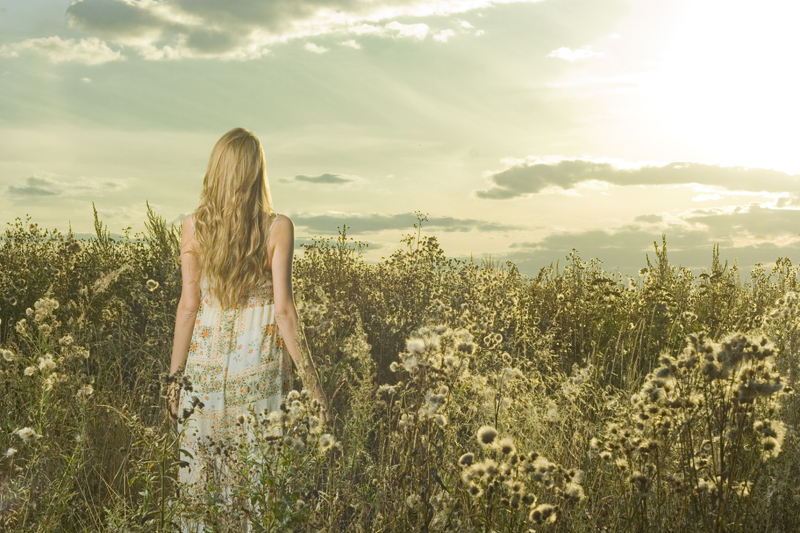Finish Fraying Fabric Edges

A home serger (like industry sergers) cuts, stitches and encases with threads a closed seam allowance with precision, speed and professional looking results providing multiple needles, multiple threads, cooperating loopers and a mountain of patience to coordinate all come together in blissful harmony. Not all home sewers though have the benefits of this time saving device nor the patience of shepherds to get its multiple moving parts working with desired accuracy.
Consider the following two seam edges using a traditional sewing machine as an alternative:
Straight stitch, then zig zag stitch – one way to create the look of a serged edge without a serger is to stitch the seam as usual using a straight stitch, then go back and using a zig zag stitch, stitch again just to the right of or close to the just sewn straight stitch. The straight then zig zag stitch need not go all the way to the edge of the seam allowance if desired as the seam allowance can be carefully cut up to the right edge of the sewn zig zag stitch. This process works for some fabrics, particularly knits, that tend to curl at the edge or get pulled into the throat plate when sewn close to the raw edge. For fabrics that have enough body, the straight stitch followed by the zig zag stitch can be close to the fabric edge as long as the zig zag stitch lays on and does not cross over the fabric edge. The only downside to using this stitch is that two passes are made for each seam allowance. A plus is that a neat professional looking encased edge can be created that fairly imitates a serged edge and be applied to seam allowances of varying widths.
Overcast presser foot – sometimes called an overedge foot, creates a straight stitching line and seam finish at the very edge of a seam. It will control a somewhat narrow width seam using a zig zag, multi zig zag (additional stitch taken in the middle of zig zag) or overedge stitch as one of the many stitch selections on modern machines. This specialty presser foot can be easily identified as within the open toes of the foot is seen a small round bar. The finished uniform all-in-one-stitch appears as a straight seam line at the left of the stitch while at the same time encasing the raw edge of the seam on the right. The foot’s small bar allows for the thread to pass over the bar with the right swing of the needle onto the raw edge of the fabric. This stitch often has the look of a hand buttonhole stitch on a fabric or appliqued edge. Many machines have a slant overedge stitch selection as well so the stitch that passes to the right edge has a slight slant to it. This overedge stitch, once carefully aligned to the seam edge, takes a little practice to avoid the right swing of the needle from going over the fabric edge. Some overcast presser feet have a small extension at the front of the inside of the right toe of the foot for guiding along the raw edge. Besides creating a neat, finished edge on many fabrics that will not curl or fray, a great use of this foot is to attach ribbing to cuff, neck or hem edges, slightly stretching the ribbing when sewing that will preserve the stretch capacity of the ribbing.
Lucky enough to have a serger? Lucky still to have one that air threads the loopers? The amazing speed at which a serger can neatly and precisely cut a seam allowance, stitch a secure seam and overcast the raw seam edges simultaneously is astonishing to behold. However, if a serger is not in your sewing arsenal, or perhaps difficult to make peace with precise threading of the needles and loopers, then give the above two options a try using a standard sewing machine to reasonably duplicate a neat, seamed edge.
Sew happy, sew inspired.
Consider the following two seam edges using a traditional sewing machine as an alternative:
Straight stitch, then zig zag stitch – one way to create the look of a serged edge without a serger is to stitch the seam as usual using a straight stitch, then go back and using a zig zag stitch, stitch again just to the right of or close to the just sewn straight stitch. The straight then zig zag stitch need not go all the way to the edge of the seam allowance if desired as the seam allowance can be carefully cut up to the right edge of the sewn zig zag stitch. This process works for some fabrics, particularly knits, that tend to curl at the edge or get pulled into the throat plate when sewn close to the raw edge. For fabrics that have enough body, the straight stitch followed by the zig zag stitch can be close to the fabric edge as long as the zig zag stitch lays on and does not cross over the fabric edge. The only downside to using this stitch is that two passes are made for each seam allowance. A plus is that a neat professional looking encased edge can be created that fairly imitates a serged edge and be applied to seam allowances of varying widths.
Overcast presser foot – sometimes called an overedge foot, creates a straight stitching line and seam finish at the very edge of a seam. It will control a somewhat narrow width seam using a zig zag, multi zig zag (additional stitch taken in the middle of zig zag) or overedge stitch as one of the many stitch selections on modern machines. This specialty presser foot can be easily identified as within the open toes of the foot is seen a small round bar. The finished uniform all-in-one-stitch appears as a straight seam line at the left of the stitch while at the same time encasing the raw edge of the seam on the right. The foot’s small bar allows for the thread to pass over the bar with the right swing of the needle onto the raw edge of the fabric. This stitch often has the look of a hand buttonhole stitch on a fabric or appliqued edge. Many machines have a slant overedge stitch selection as well so the stitch that passes to the right edge has a slight slant to it. This overedge stitch, once carefully aligned to the seam edge, takes a little practice to avoid the right swing of the needle from going over the fabric edge. Some overcast presser feet have a small extension at the front of the inside of the right toe of the foot for guiding along the raw edge. Besides creating a neat, finished edge on many fabrics that will not curl or fray, a great use of this foot is to attach ribbing to cuff, neck or hem edges, slightly stretching the ribbing when sewing that will preserve the stretch capacity of the ribbing.
Lucky enough to have a serger? Lucky still to have one that air threads the loopers? The amazing speed at which a serger can neatly and precisely cut a seam allowance, stitch a secure seam and overcast the raw seam edges simultaneously is astonishing to behold. However, if a serger is not in your sewing arsenal, or perhaps difficult to make peace with precise threading of the needles and loopers, then give the above two options a try using a standard sewing machine to reasonably duplicate a neat, seamed edge.
Sew happy, sew inspired.

Related Articles
Editor's Picks Articles
Top Ten Articles
Previous Features
Site Map
Content copyright © 2023 by Cheryl Ellex. All rights reserved.
This content was written by Cheryl Ellex. If you wish to use this content in any manner, you need written permission. Contact Cheryl Ellex for details.







